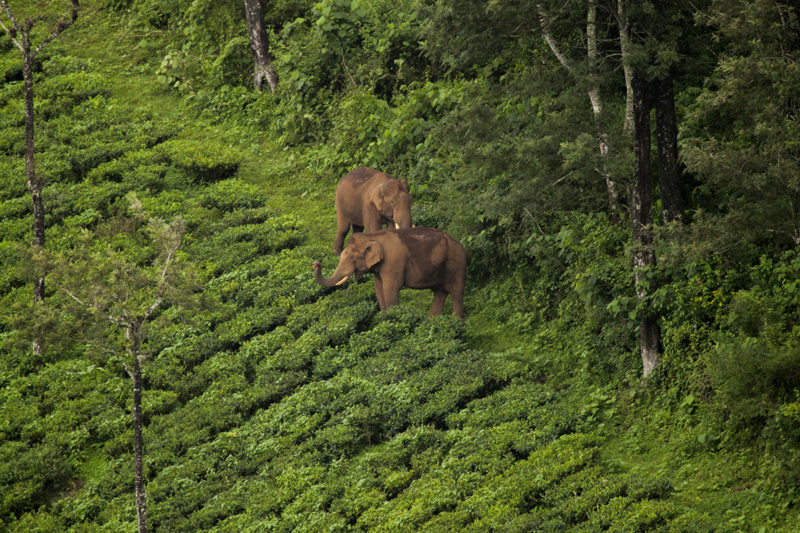Hardly any day goes by without a news item in the newspapers, especially the Malayalam dailies, on human-wildlife conflict. In several villages bordering forests, wild animals, especially elephants habitually raid crops inviting the wrath of the local people. Preventive fencing and trenches generally are ineffective, mainly due to lack of proper maintenance and the process of compensation to crop losses is usually delayed or insufficient, according to the affected farmers. Addressing the concerns of the local people is essential for the peaceful co-existence of humans and wildlife. Without the goodwill and support of the local people, conservation is not possible at all.
The forests of Kerala have been irreparably fragmented over the years. Most of the former wildlife habitats and migration routes are now thickly populated human habitations and the appearance of wild animals in these places cause panic not only among the residents but also the wild animals. Unfortunately, it is only in retrospect we understand that many of these calamities were avoidable: the recent tribal settlement in Aralam Farm is a good example for this. In 2004, half the area (about 3000 acres)of Aralam Central State Farm, which was originally owned by the Central Government, was acquired by the State Government and by 2007 the distribution of this land to landless tribal families was initiated. As most of this land was contiguous with Aralam Wildlife Sanctuary and as it was known that wild animals regularly strayed into the farm, several environmentalists and some officials of the Kerala Forests and Wildlife Department had expressed their concern on the idea of creating human settlements adjacent to the boundary of the sanctuary. They had insisted that a buffer area be left between the Sanctuary and the settlement. But all these pleas fell on deaf ears and now we can see houses and cultivation all along the border of the Sanctuary. A trench, a granite wall and electric fence are not always enough to deter the elephants from entering the Farm. The residents, about 7000 people (http://www.kudumbashree.org/storage/files/523vw_aralam%20tribal%20special%20intervention%20programme.pdf ), are under perpetual fear and several valuable human lives have already been lost. The number of wild animals that perished in the bargain is unknown. The print and visual media coverage on these incidents is always biased with the wild animals being depicted as the villains. A lot of research has been conducted on human – wildlife conflict all over the world and several mitigation measures have been proposed, though most are site-specific. In India, Wildlife Trust of India has been doing a lot of studies in this field (e.g. see: https://www.wti.org.in/wp-content/uploads/2017/04/pub_conflict_coexistence-2.pdf ). But, implementation of suitable solutions is the key.
A lot of research has been conducted on human – wildlife conflict all over the world and several mitigation measures have been proposed, though most are site-specific. In India, Wildlife Trust of India has been doing a lot of studies in this field (e.g. see: https://www.wti.org.in/wp-content/uploads/2017/04/pub_conflict_coexistence-2.pdf ). But, implementation of suitable solutions is the key.
Sincere action supported by a lot of political will is the need of the hour.

